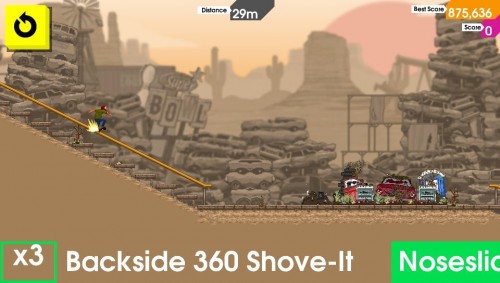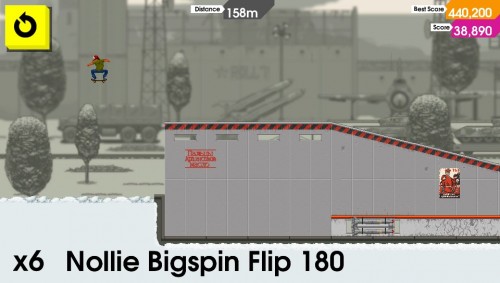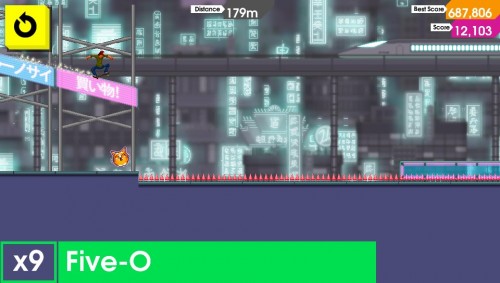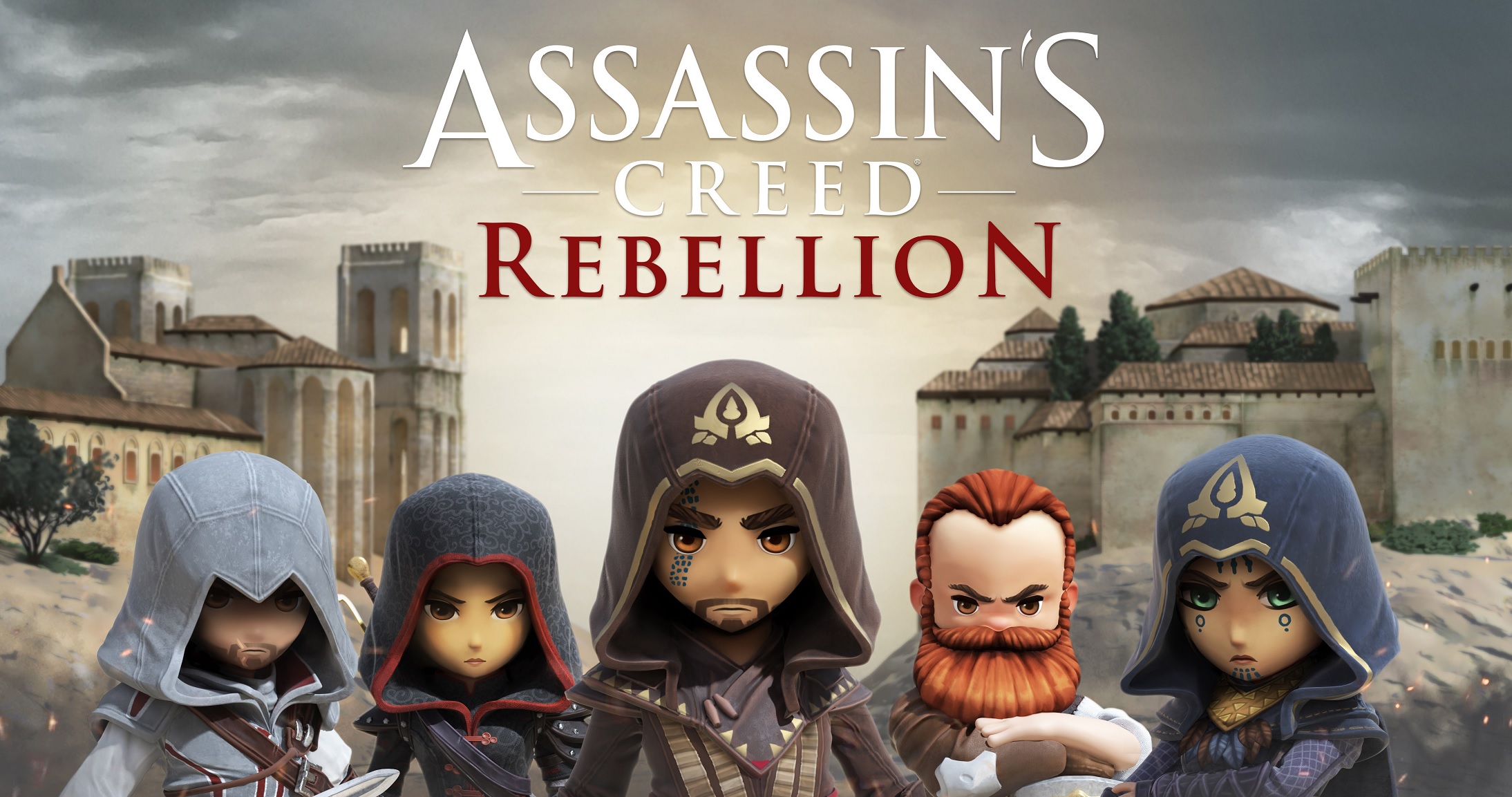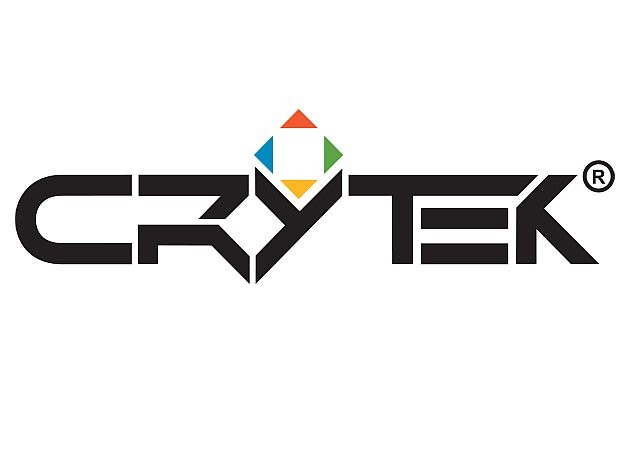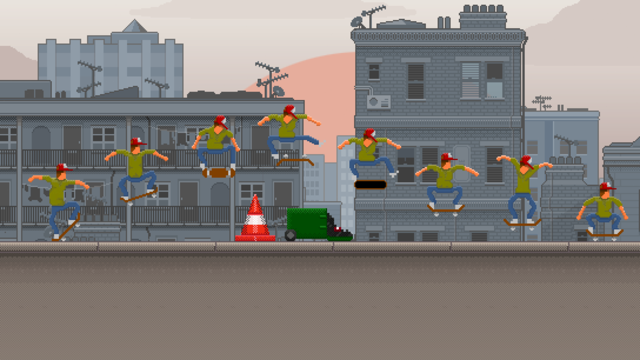
I feel the landscape of portable gaming has changed notably over the last few years, and I’m not just talking about the advent of mobile. Honestly, at this point it’s a disservice to call mobile as anything less than firmly established in the medium. So let’s put that aside. No, I’m talking about the types of games that have hit portable devices, divvied up between Nintendo 3DS, PlayStation Vita, and yes, mobile too. A generation or so ago portables were almost unanimously dedicated to pick-up-and-play quick-fix arcade games, best suited to those short commutes, marginally longer toilet breaks, and longer again prison stints where time to completely lose yourself in grand adventure simply wasn’t realistic out of fear of missing your stop or getting shivved.
So my odd observation is that these days most of these games (no, not all, picky readers) find a home on mobile. Many of the most prolific 3DS and Vita games of recent times have been everything but pick-up-and-play. I’m not really complaining, mind you. Tearaway and A Link Between Worlds were two of my top ten games of the year. I enjoyed Killzone: Mercenary and Luigi’s Mansion: Dark Moon well enough, too. But nevertheless, these were not games I kept in my pocket for a quick play behind a bin whenever I felt irresistible twitches coming on in public. They were investments, of time and emotional energy. When given this attention they came alive, brightening up a lazy Sunday afternoon and illuminating the dark of night from the comfort of my bed. But they weren’t really arcade games, or even really portable games. And I’ve always found that a bit odd.
You can predict where I’m going with this, so after two paragraphs of romanticising portable gameplay let’s just cut to the chase: OlliOlli for PlayStation Vita is as arcade as it gets. It’s a portable game. It’s the kind of game that mobiles have been inundated with for years now, rewarding short term investments by trimming bloat and condensing addictive gameplay feedback loops into the smallest window. “Dense” isn’t the right word, because you won’t be juggling a spreadsheet of numerical stats or meticulously plotting your grand strategy take over of 1940’s Europe. No, I think “efficient” will do instead. OlliOlli is an efficient game, in play and presentation, joining similar ranks held by Hotline Miami and Super Meat Boy. And if you’ve played those latter two titles, you’ll understand the breadth of that compliment.
My instinctive description of OlliOlli is “it’s like an endless runner, only not shit”. That’s a bit of a lie; like the rest of the internet, I too love Robot Unicorn Attack. But where OlliOlli differs from a singular procedurally generated (read: endlessly recycled) sprint that challenges endurance more than anything else, is that here we have actual level design. I know, right? That somewhat automated forward momentum of endless runners beats at the heart of OlliOlli‘s formula, moving you horizontally from A to B with not a moments pause, but the levels themselves are specifically constructed challenges built to exploit and embrace underlying game systems and encourage long term planning and skill mastery as tightly defined layouts bore deep into your memory.
I think it’s pretty clever, actually. The top layer of OlliOlli‘s ocean is a thin film of “GET TO THE FINISH”. That’s it, and it’s enough to make entry level play interesting. Doing so requires an understanding or each stage’s various unskatable staircases and flowerbeds, indestructible barriers you do not want to hit head on, and grindable surfaces of various inclines and declines, all of which influence your momentum. I suspect a good few might initially struggle with the the control system, flicking left stick in any direction to jump/olli while X is reserved for balancing the board when impacting the ground, as well as holding left stick (again in any direction) to grind. But the initial platformer veteran awkwardness of “WHY THE HELL ISN’T X JUMP?!” quickly wears off and the logistics of the controls all come together. You don’t press X to jump, because jumps themselves are part of naturally performing both easy and complex skateboard tricks and thus are also about how you position and roll the stick. Landing is an important part of skating, retaining your balance, so it makes sense that a quick tap of a button on impact keeps you steady as you move forward. And how else would you control the direction of your board during a grind if not using the stick?
You quickly realise the basics of OlliOlli require only two things: you flick the left stick to jump and hold it to grind, and you tap X to balance landings. That’s it. By mastering control over landings, and keeping up momentum as you bridge grinds across gaps, you can get to the finish in literally every stage under the amateur and pro tiers. And you’ll have a lot of fun doing so, giving those twitch reflexes a workout while relishing in the satisfaction of jumping from rail-to-rail via speedy grinds. This part of OlliOlli weirdly reminds me of old Sonic the Hedgehog, the emphasis on momentum and jump trajectory over pure speed, but lets not risk extrapolating further out of fear of encouraging crossover fanart.
Note that I called OlliOlli an ocean. Dropping below the surface and exploring its depths invites in a richer metagame of maximising trick combos and conquering challenge criteria. As noted, OlliOlli‘s trick system is linked to the left stick; circular and directional movements, such as clockwise half-moons from the top, or anti-clockwise quarterly rotates starting from the left, execute various skateboard manoeuvres with differing animation lengths and score rewards. Combining multiple grinds with complicated tricks escalates the combo multiplier, and a ‘perfect’ landing (required by pressing X just as you hit the ground) maximises the final score. Imagine this in your pretty little head and you can paint a decent picture of how deep the rabbit hole goes.
OlliOlli rewards investment. Not the aforementioned grand adventure investment, but instead investment in play, and understanding the game systems. The challenge of getting to the finish is made obsolete by richer challenges (five per stage) that require you perform specific tricks, meet combo and final score benchmarks, chain particular grinds, acquire collectables, and more. You’re suddenly playing a game that’s less about just crossing the finish line and more about mastering the track entire. And it’s surprising is how seamless the transition from shallow level play to deeper involvement is. You start by learning the basics, fobbing off higher level challenges as too complicated and maybe too confusing. Next thing you know you’re booting up “Base” world pro stage four for the hundredth time in an attempt to complete the 400K High Score challenge alongside “No Grind”, and pushing yourself to topple world records on the “Daily Grind”. It’s a marvellous natural progression of growth and skill.
Best of all, nowhere on OlliOlli‘s entry form is a dotted line prerequisite of former experience with or knowledge of skating, at least no more so than Hotline Miami demanding a background check to ensure players meet a mass murder quota. The terminology is there, and like me you’ll learn a thing or two about board usage that you maybe didn’t pick up from Tony Hawk and Skate, but OlliOlli utilises its skater theme moreso as a perfectly fitting dressing to the game design and play than an overbearing knowledge bank aimed exclusively at enthusiasts. In theory, OlliOlli could be successfully presented under a number of different aesthetics: generic snowboarding, post apocalyptic cyberpunk future skating, or even a cheesy Silver Surfer franchise cash-in. But the aesthetic choice of “skating” is so cohesive with the rhythmic trick system and the sensible dissonance of a traditionally grounded yet deliberately exaggerated sport that I wouldn’t have it any other way. And regardless of your skating history (or maybe lack thereof) I think you’ll feel the same way too.
Overwhelming enthusiasm for what OlliOlli does right is pretty easily cut off at the knees by what it does wrong. Okay, that’s a bit of an exaggeration, because the issues aren’t too significant, but do show room for further polish and development of the formula. Technically? OlliOlli crashes. Not frequently, but enough to note, and as of writing the game hasn’t been patched. I’ve also had the odd issue where the touch controlled main menu wasn’t responsive until I used the PS button to minimise the app then reopened. Aesthetically? Clearer visual discrepancy between safe objects and barriers/obstacles could be made, as they sit on the same layer. Easy enough to learn, after a bit of trial-and-error. Tutorial? It’s a bit weak. OlliOlli may not be an endless runner, but would benefit from an easy, endlessly scrolling zone of rails to grind and stairs to jump to better ease in trick practise. As it is you’ll have to practice in actual stages. Speaking of endless runners, even though OlliOlli is absolutely superior to the genre, it does have a few of those annoying split second reflex traps you’re unlikely to avoid on your first run. OlliOlli does consciously embrace trial and error with an open heart, but man do I hate that stuff. I’m probably just being picky.
The technical issue stand above the others, the rest fairly easy to put aside in favour of the good, nay great arcade brilliance that is in OlliOlli. And really, that’s where this review comes full circle, and where OlliOlli succeeds more than anywhere else. An initial load on boot has OlliOlli load the entire game into the system memory, a seamless blend of all components a clear objective of the development team as catchy chiptune tracks play and cycle without pause regardless your menu toggling and stage juggling. You boot it up, you’re good to go. Jump in. Do a kickflip. Tap a button to instantly reset a stage. Play for 30 seconds. Play for an hour. The choice is yours and the rewards almost instantaneous, the simple fun never lessened because you don’t have several hours to sink in and equally so if you do. Like all good arcade games OlliOlli will drive you to the brink of frustration, and through that frustration you will endure, because fuck it; I am going to land that 360 spin Impossible to Nosegrind and keep my 350K+ score across the finish, and you’re damn right I’ll relish in my glorious victory when I do.
Brilliantly addictive arcade bliss
Rough tutorial | Technical issues

